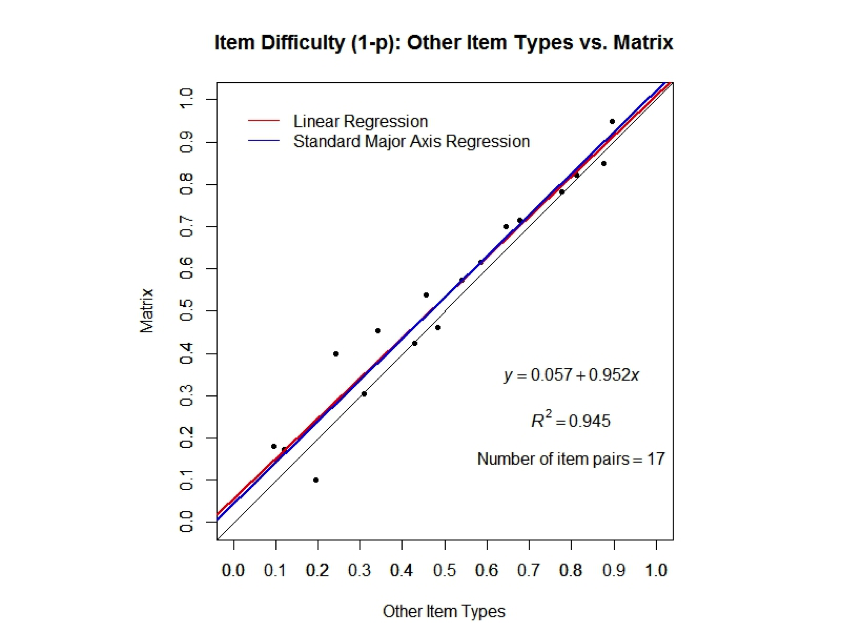Large-scale field tests consisted of two matched test forms, A and B. At each grade and subject, both forms were precisely the same in length and content. Matched forms were prepared for ELA and math at grades 3-8 and high school.
The selected-response items on the two forms were identical. However, the TE items on Form A that were believed to be inaccessible to students with vision and motor disabilities were reformatted into accessible alternative formats for Form B. Project staff based the identification of TE items that were likely to create barriers on the qualitative feedback obtained from expert reviewers, teacher panelists, and students in cognitive labs. The alternative items maintained the same wording as the original items but appeared in formats that provided for different item presentation and response modalities. A total of 61 items were altered for an average of about 4 items per test.
Both forms were delivered online and without accommodations to large samples of students in the general testing population, including most students with disabilities who do not require testing accommodations or special forms. Students who used any accommodation, including online audio, were excluded from these analyses.
Analyses of differences between item types based on matched item pairs showed that item difficulty was close to equivalent regardless of item layout. In other words, items that required dragging and dropping on Form A but were reformatted as matrix or matching items on Form B performed similarly. There was some evidence that matching items were slightly more difficult as TE alternatives than matrix items, particularly for elementary students, which warrants further investigation.

